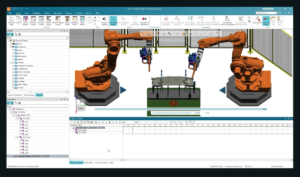
Property safety has become a top priority for landlords and property managers, as tenant expectations rise and liability concerns grow. A significant shift towards smart safety tools is underway, with these technologies now seen as essential investments rather than optional upgrades. Research indicates that 58% of renters prefer properties equipped with smart home capabilities, highlighting the urgency for landlords to modernize their safety measures.
Smart safety solutions not only provide comprehensive protection but also streamline property management tasks, helping busy landlords reduce insurance costs and minimize vacancy rates. Video surveillance serves as the foundation of modern property protection, offering visual oversight that enhances all other safety measures. Today’s camera systems go beyond basic recording to deliver intelligent monitoring that can prevent incidents before they escalate.
Comprehensive Surveillance Solutions for Property Owners
Business security cameras are crucial for overseeing multiple zones and ensuring thorough safety across properties. Landlords require robust monitoring solutions that can adapt to various areas and integrate seamlessly with existing management platforms. Implementing tailored security systems designed for rentals often includes weather-resistant cameras that monitor hallways and parking lots. These systems typically feature cloud storage for footage, ensuring video evidence can be retrieved even when local devices are compromised.
For effective multi-zone oversight, security cameras should be placed in common areas, points of entry, and exterior spaces. Their ability to differentiate between routine behavior and suspicious activity minimizes unnecessary alarms while maintaining vigilance.
When deploying security cameras, strategic placement is key. Indoor units should be positioned in shared hallways and lobby areas while respecting tenant privacy. Outdoor surveillance cameras need to offer weather resistance, night vision, and durable, tamper-resistant casings. Many of the best security cameras support features like ultra-high resolution, two-way audio communication, and seamless smartphone connectivity for continuous remote monitoring.
Live video monitoring adds an extra layer of security by allowing trained professionals to observe security feeds in real-time, assess situations promptly, and collaborate with law enforcement when necessary. Integrating access control systems with business security cameras creates a layered approach to security, effectively preventing unauthorized access.
Advancements in Smart Lock Technology
Modern access control systems now integrate biometric scanning, temporary codes, and multi-factor authentication, ensuring only authorized individuals can enter properties. Today’s smart locks offer features such as fingerprint recognition, proximity card access, and smartphone-based entry with geofencing capabilities. These systems automatically generate audit trails, detailing who accessed specific areas and when.
For sensitive areas like utility rooms or storage facilities, multi-layered authentication enhances security. Combining proximity cards with PIN codes or requiring both smartphone verification and physical presence establishes robust barriers. Emergency override capabilities enable landlords to access properties during crises while maintaining detailed logs of all entries.
Internal emergency detection systems complement access control by monitoring for threats that develop inside secured areas. Modern systems go beyond traditional smoke alarms, providing comprehensive threat monitoring with instant notifications. For example, smart smoke detectors connect to building-wide networks, sending alerts to tenant smartphones and property management dashboards simultaneously. Heat sensors can detect fires in areas where smoke alarms might trigger false positives, such as kitchens.
Water damage poses a significant risk to rental properties, with potential devastation occurring in hours. Smart sensors placed near water heaters, under sinks, and in basements can detect moisture immediately and trigger automatic water shut-off systems. A report from Research Snipers indicates that 90.2% of property managers utilize accounting software, reflecting the high technology adoption levels in the industry, which facilitates smoother integration of emergency systems.
Panic button systems and fall detection sensors significantly benefit vulnerable tenants by automatically contacting emergency services. These systems can also notify designated family members while coordinating with local responders. While internal monitoring protects against emergencies inside the property, perimeter security creates the first line of defense against external threats.
Enhancing Perimeter Security with Smart Technology
Monitoring property boundaries with intelligent systems is essential. Smart doorbells and window sensors together create comprehensive perimeter awareness. AI-powered doorbells not only recognize known individuals but also track deliveries and facilitate two-way communication, enhancing visitor management and deterring package theft.
For entry point protection, magnetic sensors, glass break detectors, and vibration monitors provide an effective security solution. These systems can offer silent alarm options for covert monitoring and distinguish between accidental contact and forced entry attempts. While physical security measures address human threats, environmental hazards require specialized detection systems to monitor air quality and toxic exposures.
Effective tenant safety systems reach their full potential when they communicate seamlessly with tenants, property managers, and emergency services through integrated platforms. Dedicated safety apps provide one-touch emergency alerts, incident reporting with photo documentation, and community safety forums. These platforms can also send seasonal safety reminders and promote neighbor watch programs, thereby strengthening community security.
Centralized monitoring dashboards display real-time safety system status, generate automated compliance reports, and send predictive maintenance alerts. Such platforms can calculate tenant safety scores and provide analytics to identify potential problem areas before incidents occur.
Although universal safety principles apply across rental properties, different property types face unique challenges, necessitating specialized approaches. Legal compliance is crucial for safety system implementation, ensuring that protective investments do not create liability issues. Privacy laws vary significantly by location, which requires careful camera placement and clear tenant disclosure.
Looking ahead, future safety technologies are expected to incorporate AI-powered predictive analytics, expanded IoT sensor networks, and 5G connectivity, enhancing system capabilities. Planning for these advancements ensures that safety investments remain effective as technology evolves.
Tenants generally have the right to install security devices like alarms and cameras inside their rental properties, provided these devices do not record shared or common spaces. The cost of smart safety systems for rental properties typically ranges from $2,000 to $15,000 per unit, depending on system complexity. Landlords can expect potential rental premium increases of 8% to 15%, which can offset costs within 2 to 3 years. Current recommendations for smart home equipment include TP-Link Tapo cameras, Arlo Video Doorbells, Ultraloq smart locks, ADT Command systems, and Vivint Smart Home systems.







